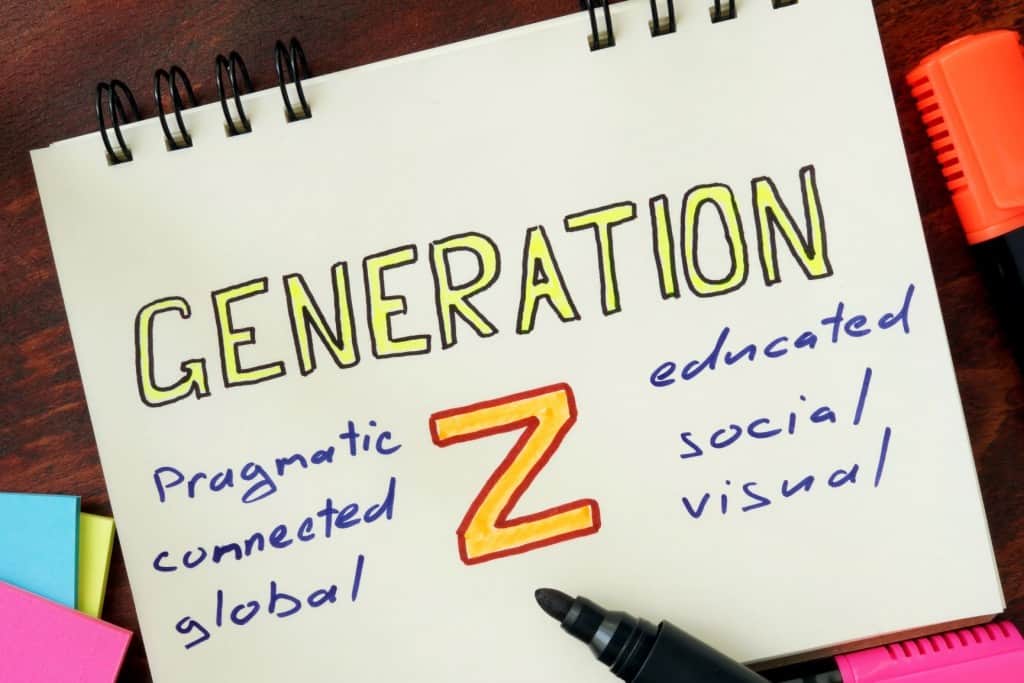Preparing your learning strategy for Gen Z
The fascination with Millennials is over. It’s time for organizations to turn their attention to a new generation entering the work force – Generation Z, also known as Gen Z. According to Monster, this cohort will account for 20% of the global workforce by 2020.
To better understand how to tailor learning strategies to keep members of Gen Z engaged, let’s take a quick look at the common characteristics shared by this new breed of workers.
Who makes up Gen Z?
Demographers and researchers typically use 1995 as the starting birth year for Gen Z members. Many of them have parents hailing from the Gen X population, and, as such, grew up in an age of economic recessions and political uncertainty (among them: September 11, financial crises across the globe, various civil wars – to name a few).
The results have shown to be widespread feelings of unsettlement and insecurity among the people of Gen Z; they are reported to be more risk-averse and frugal than Millennials, and demonstrate a desire for more stable careers. Indeed, even The Wall Street Journal reports that more than any generation on record, Gen Z wants financial security.
Generation Z is also the first digitally native generation. Much of Gen Z’s socializing takes place via text messages and social media platforms; this generation is less comfortable with face-to-face interactions, and timid about taking the reins in the workplace.
Here are a few things to keep in mind as you consider your learning management strategies while bracing for the arrival of this new generation in your workplace.

Allow for BYOD (Bring Your Own Device)
As the first generation to know a purely technology-driven world, Gen Z will enter the workforce with an instinctive and expert knowledge of all things digital.
This is a generation that has only known a mobile world. This cohort is used to wearables, virtual reality, and so on (Docebo notes that, on average, Gen Z reaches for a phone or tablet every seven minutes). If HR and L&D managers want to better relate to Gen Z workers, it’s a good idea to meet them where they already are and create an engaging experience connecting the physical and digital worlds – using the devices they’re already carrying.
Indeed, when it comes to communication, the fastest way to reach a Gen Z-er is via text, instant message or chat. And while studies say that face-to-face communication is still widely preferred, Generation Z values being able to perform tasks on-the-go; these folks will work, and learn, anytime, anywhere, using tools that allow them to connect and collaborate when standing in line for coffee, riding the bus to the office in the morning, or sitting in the doctor’s waiting room. Learning opportunities should not be limited to the actual physical office; content should always be accessible and engaging across devices, or that’s precious learning time lost.
Gen Z is also used to gaming, so you might consider gamification features that foster healthy internal competition. This will both boost morale and improve overall training levels as employees work to beat each other’s bests. Because this is a generation that values two-way conversations, consider how to digitally invite feedback and collaboration, perhaps by using polls to drive discussions.
And, by fostering competitive elements, a young employee might be motivated to share his or her “wins” – if he or she posts this on social media, as Gen Z-ers are wont to do, it benefits both the organization and the individual. They receive recognition for their efforts while also unknowingly promoting the organization.
Be transparent
This is a group of people who know their way around the Internet. They’re used to conjuring up information, data, statistics – in seconds. As such, Gen Z-ers are inherently skeptical. They expect to know what the intended outcome of learning is, upfront; it’s crucial that goals and objectives are outlined very clearly at the beginning.
Additionally, leaning on a corporate – and one that might be outdated – brand identity won’t resonate among Gen Z members, who have grown up inundated with advertisements and marketing campaigns across multiple devices and social channels. They’ll think you’re inauthentic and distrustful. Be open and honest in your communication with them, and as much as possible, leverage external speakers and experts for your workshops and trainings. With access and exposure to so much information daily, Gen Z-ers value uniqueness and originality.
Be (even more) inclusive
With the accessibility of real-time information, Gen Z has a larger awareness than Millennials of today’s realities. They’re more socially conscious than previous cohorts, having grown up with exposure to protests, demonstrations and other historic movements across the globe via social platforms like Twitter and Facebook in addition to articles and blog posts. Embracing diversity is already part of their DNA and consequently they expect values like equality, inclusivity and accessibility to be reflected in their place of work.
You might consider reworking current learning materials and courses to account for a wider diversity and inclusion lens – being sure that content is tailored to represent and resonate across genders, ages, nationalities, ethnicities and so on.

Connect their values
Knowing that they value equality and technological innovation, consider creating programs and opportunities for them to work with and learn from people across all ages, races and sectors so that they can establish interactions with co-workers. This is a good way for Gen Z to improve on face-to-face communication and benefits more senior employees who might learn some more digital skills.
Learn from them
And finally – allow them to teach you! Again, this is a group that is adept with technology – even more so than Millennials – so you might benefit from hearing fresh insights and ideas. After all, they’re today’s taste-makers and trend-setters.
